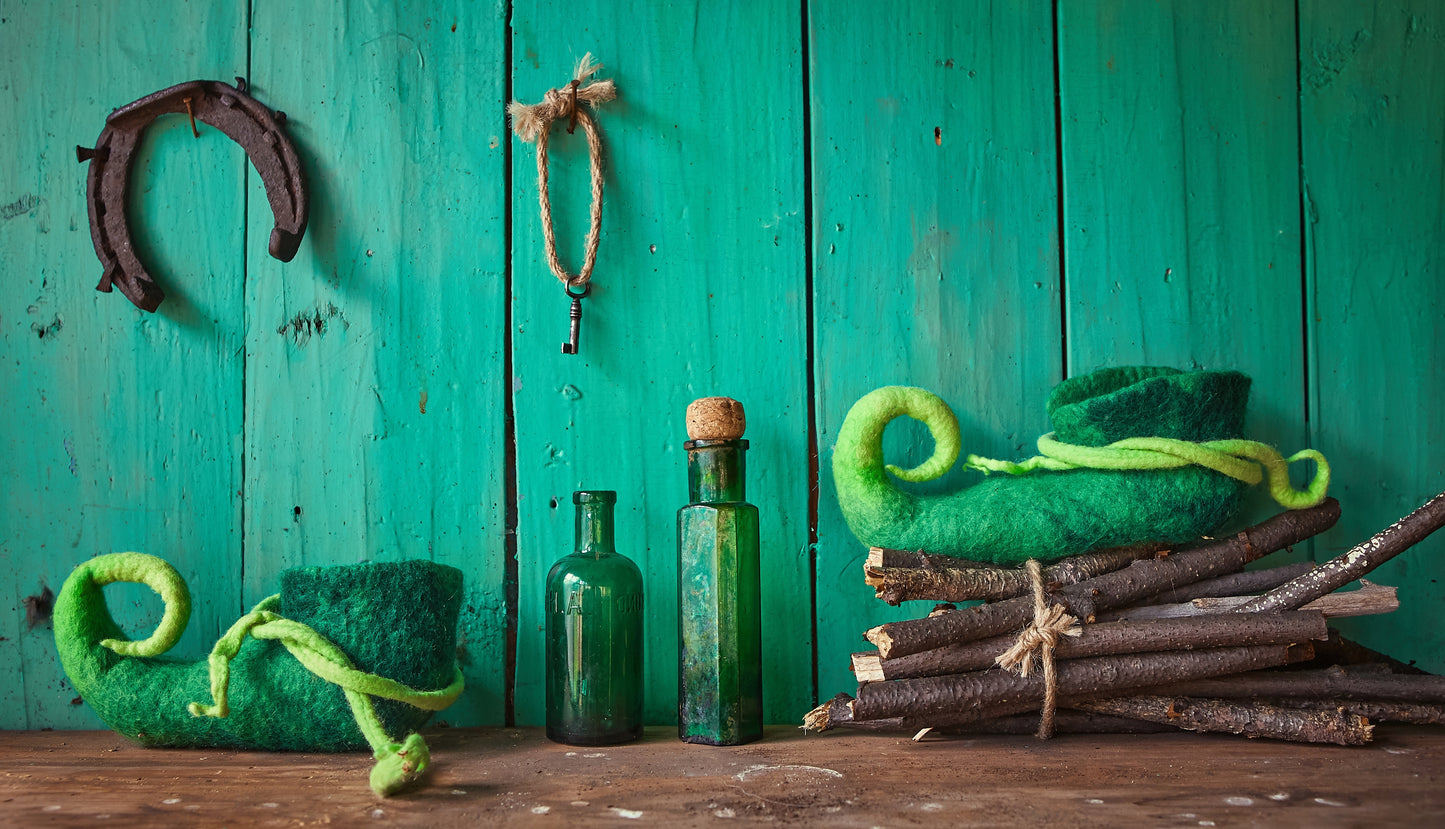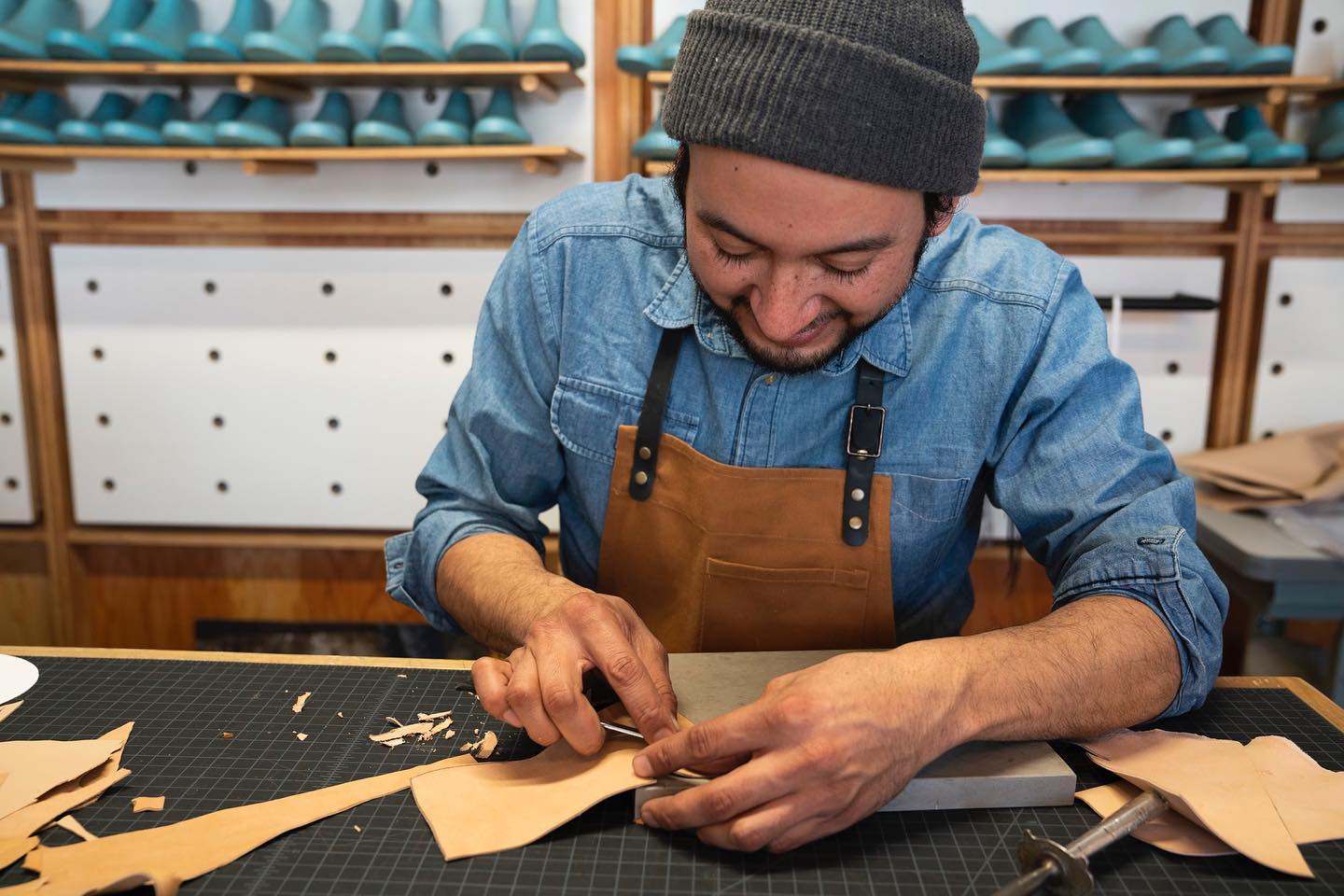
Why Are Elf Shoes Curly & Pointy?
Elf shoes are curly-toed slippers that are commonly used as Christmas decorations. Occasionally, people wear them to Christmas parties as fun accessories. You are likely to see at least one person dressed as a Christmas elf during the holidays. The elf costume is quite popular.
So what’s the story behind curly and pointy elf shoes? For starters, elves are a subject of fiction. They are said to be magical creatures in the North Pole that work for Santa Claus. In various books, writers perceive them as little old men that lived in meadows and forests. Their homes were in hollowed-out tree trunks.
According to various writers, elves work in Santa’s workshop throughout the year, making toys in preparation for Christmas. Every elf in Santa’s workshop wears the elf costume and elf shoes.

Elf shoes were inspired by various shoe styles in medieval Europe, specifically, the crakows or poulaines and winklepickers. This article discusses the different shoe styles in medieval Europe. Additionally, we will discuss how crakows and winkle pickers inspired what we refer to as elf shoes. Let’s dive in.
Trendy shoe styles in medieval Europe
Sharp pointed shoes made a debut in Europe in the 1200s. In the 15th century, lords and ladies in Europe hopped on a fascinating trend in medieval fashion- poulaines. Poulaines’ toe length was longer than any shoe manufactured at the time. This pointed shoe quickly gained popularity all over England.
Anyone who had the money to buy shoes bought poulaines. However, poulaines with more extended tips were reserved for nobles. In medieval Europe, poulaines symbolized wealth and high social status. Those who had a lot of wealth showed off by wearing poulaines with long tips. Some went to the extreme by wearing shoes with absurdly long toes. At the time, they were a symbol of luxury and leisure. The shoes may not have been practical, but they were a favorite among the wealthy.

You may be wondering how poulaines’ tips remained pointed. Medieval shoemakers knew that for the tips to stay erect, they needed to stuff them. Therefore, they used organic material like wool, hair, or moss as stuffing to ensure that the pointed tip doesn’t become floppy. Besides keeping the tips erect, the stuffing also ensured that the ends did not curl when wet.
Another reason why medieval Europeans were crazy about long pointed shoes was that they had sex appeal. They were cut in a way that showed off part of one’s ankle, which was considered very sexy at the time.
Most poulaines were made of leather, but a few were made of fabric like velvet, silk, and embroidered textiles. There were different unique patterns of poulaines in the market. The most outstanding one was a delicate leaf pattern.
Crakows
As mentioned above, crakows inspired the curly, pointy elf shoes you see today. Crakows are a style of shoe that was popular in the 15th century. They had unusually long toes. The style reportedly originated from Krakow, Poland.
The shoes were long, pointed, and spiky. Although they had what most would call a funny appearance, they were very trendy in Poland between the 12th and 15th centuries. Shoemakers stuffed the pointed toes with moss for them to hold their shape.

Who wore crakows? Initially, crakows were worn by nobles and upper-class individuals. However, ordinary folks started wearing them too when they became famous.
Both men and women wore crakows. However, men’s shoes had more extended tips than those of women. Extra-long tips were reserved for the wealthiest people who wanted to show off. The long tips were a symbol of luxury.
Shoemakers used various materials to make crakows. However, leather was the go-to option. Manufacturers would attach silver or gold chains under the wearer’s knee if the tips were elongated. The chains would help the tips remain erect. Some crakows also had ‘patterns.’ These were shoe covers which made the shoes more stable. They were either made from leather or cork.
Crakows were ideal for indoor and outdoor events. However, wearers had to be careful while wearing them outdoors since they were susceptible to pratfalls. Several other crakows styles emerged with time, the most common being strapped crakows and slip-on crakows.
As crakows continued to gain popularity, more and more ordinary folks started mimicking the once considered noble style. Consequently, Charles V of France banned the production of crakows in 1368. His reason was that the elongated tips made it hard for men to kneel during prayer. In 1463, King Edward followed suit by introducing sumptuary law, which dictated that the ends of crakows shouldn’t be longer than two inches.
Crakows and elf shoes have several similarities. Both of them have long and pointy tips. Another similarity is that their tips are stuffed with organic material or fabric to keep them steady.
Winklepickers
Although crakows shoes stopped being trendy in the 15th century, they lived on through winkle pickers. Crakows inspired the production of winkle pickers. Elf shoes are similar to winkle pickers because they have low heels and pointed ends.
Winklepickers are a style of shoe or boot popularly worn by rock n roll fans in the 1950s. They had pointed, long toes that were similar to medieval time shoes. The boot worn by men had an elaborate pointed toe and low heel. Female winkle pickers featured stiletto heels (3-4 inches long) and pointed toes. Additionally, their rears were curved.
In the 1960s, modernists started embracing winkle pickers. However, shoemakers ‘chopped off’ the pointed toes and replaced them with chisel toes.
Today, winklepicker boots are still prevalent in the modern punk and goth subcultures. They are commonly known as pikes.
Conclusion
Elves are an interesting phenomenon. Although they don’t exist, their shoes do! Elf shoes were inspired by the shoe styles in medieval Europe, hence the curly and pointy toes.
Curly and pointy toes were trendy at the time, and they were a symbol of wealth and luxury. Today, people use elf shoes as Christmas decorations and accessories.
Contact us If you’re looking for unique shoes. Our shoes are handmade in the USA. Additionally, they are sustainably and ethically made. We also make custom shoes to complement your unique style and preference.


Do you make elf shoes like the one is this post?